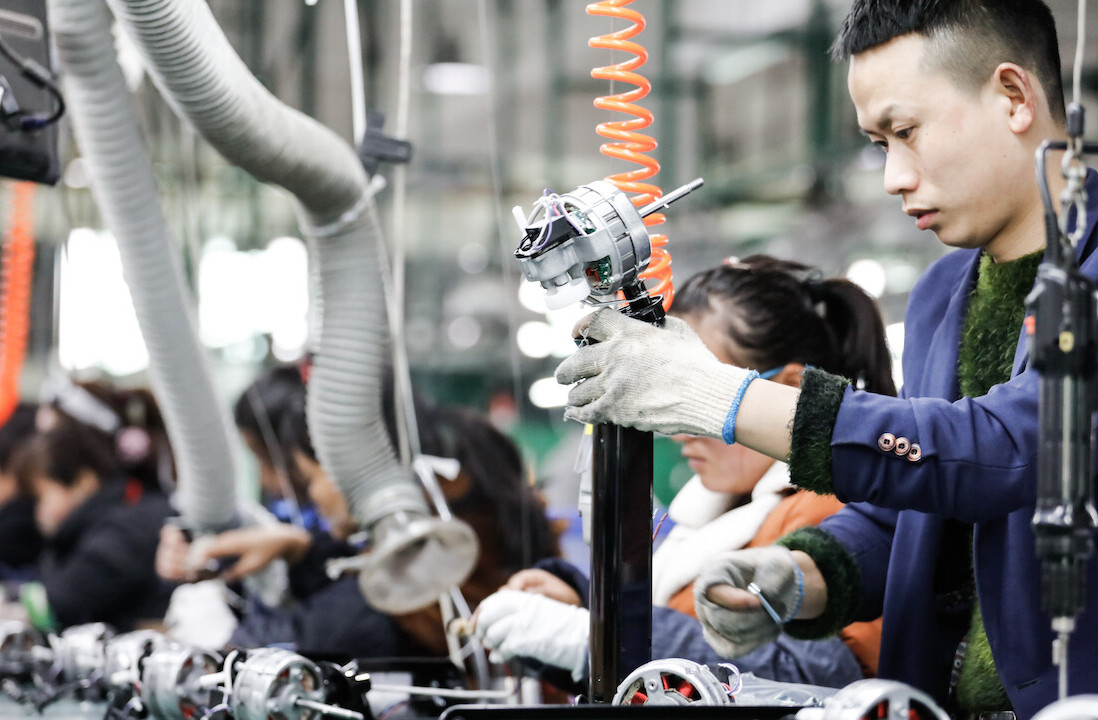
Thomas Clayton has started and run numerous high-tech startups in Silicon Valley. He is currently CEO of Bubbly, a social media startup backed by Sequoia Capital, SingTel Innov8, and JAFCO. The company is one of the largest VC–backed startups in Southeast Asia, having raised over $60M in funding.
We’ve asked him to give us some insight into starting, building, and funding a company across Asia. This is the final part of a four-part series. See part one here, part two here, and part three here.
The final piece of my four-part guide to expanding a business into Asia is tailored more towards local startups and a big issue that affects many of them: raising funding from investors.
The process of raising money in Asia is very different from raising money in Silicon Valley and, frankly, it’s not nearly as easy. Asia has far fewer VC firms and institutional investors, each of which invests a far smaller amount of capital. Moreover, the fundraising process is not standardized like it is in the Valley, and that is not going to change anytime soon.
Many Asian entrepreneurs tell me that they want to raise funds from Silicon Valley firms because they perceive the valuations to be higher. But the problem with this is that most VCs in the Valley, especially early stage ones, only like to invest in companies that are within driving distance from their offices. They are highly unlikely to invest in companies based outside of the Valley — much less in another country 8,000 miles away!
I try to emphasize to them that they’re simply wasting their time in trying to court the Valley VCs from all the way over here. The only Valley VCs that’ll invest in Asia startups typically are those that have a presence here in the region (e.g. Sequoia, Accel, NEA, etc.). However, this primarily applies to businesses within China and India, where these big firms reside, as they rarely invest in startups outside of those two countries.
If your business is based in Asia, despite a potentially tougher hill to climb, you’re still much more likely to be successful raising funds locally.
In order to help those looking down this path, I’ve mapped out what startups should expect in the process and how to come out on top.
Where are all of the VCs in Asia?
The venture capital landscape in Asia is varied and complex, as most of the active firms on the continent are concentrated in just a few areas. As I touched on before, China and India have the most mature VC communities. China’s top dogs include the likes of GGV Capital, Sequoia China, IDG, Qiming, and a handful of others.
In India, the leading firms are slightly more concentrated with Sequoia India, Accel Partners, and Nexus Venture Partners being a cut above the rest. But just like the Valley firms, most China and India-based VCs only invest in their respective countries (many are bound to that by the agreements they have with their LPs). Of course, there are exceptions, but they are minimal.
The region’s other strong VC presence resides in Japan, which has the typical Japanese model of a few large firms dominating the market. These biggest players are JAFCO, SBI, and Globis Capital.
Most Japanese firms also like to keep their investments contained to their local country, with the exception of JAFCO, which has a fund specifically for investing in broader Asia. Investments in Japan also tend to be much smaller in scale and much more conservative than the type of VC bets you would see being placed in China, India, or the U.S.
The rest of Asia is still developing with far more angel and early-stage investors than mid-to-later stage folks.
Singapore is by far the most developed behind those big three markets with government schemes attracting over a dozen early stage firms to set up shop here (e.g. Golden Gate Ventures, Jungle Ventures, etc.), the large government-linked corporations setting up their own venture arms (e.g. SingTel Inno8), as well as one of the marquee cross-regional startup incubators, JFDI.
Moreover, the Singapore firms are very open to investing outside of Singapore, as they realize that Singapore itself is too small as a domestic market and thus, some of the best startups will be in-market around the region.
Thailand, Indonesia, Korea, and Vietnam each have a couple of very good VC firms. But unfortunately, if you’re based in one of those countries and cannot impress one of them, then there are not many other options.
Set your expectations – VCs in Asia are different from the Valley
There are some key differences between fundraising in Asia and fundraising in Silicon Valley that are important to be aware of.
First, expect investors in Asia to focus on monetization far sooner in the company building process. And not just monetization, but also reaching profitability. For example, most India VCs will focus in on EBITDA very early on – a concept almost unheard of amongst early stage VCs in the Valley.
Asia’s entrepreneurs and investors have a much longer history of being scrappy and building massive businesses with very little upfront resources, because capital has always been so scarce. Thus, one can say the concept of a “lean startup” existed in Asia far longer than in the Valley – it’s just that no one ever wrote a book about it.
Investors don’t have as much patience for creative ideas, and instead they want to see action and traction. They want to see cash flow quickly (you cannot wait 2-3 years before determining your revenue model, like in Silicon Valley), so make sure you’re ready for this next step and have a solid plan in place on how to accomplish it.
This is even true for the Asian arms of Silicon Valley VCs. Meaning that what Sequoia Capital in India focuses on is going to be very different from what U.S. Sequoia Capital focuses on. These firms have done a masterful job of localizing themselves and their respective investment criteria.
Second, the fundraising process is not at all standardized like it is across the VCs in the Valley. In the typical Valley process, a partner sponsors a deal, evaluates your company, holds a few meetings, and then if you meet their standards, you’re invited to their Monday partners’ meeting to present to the entire firm.
From there, you typically get the thumbs up or down within a day or two. The term sheets tend to be fairly standardized and straightforward as well. You then have a defined period to close, which is usually a month or so.
Unfortunately, none of it happens this way in Asia. The process varies significantly from investor to investor and each step typically takes a lot longer.
Third, investors are generally much more conservative in Asia. Valuations are based more on typical later-stage type of metrics. Term sheets are littered with many more obscure protective provisions and onerous terms.
There aren’t any of the unwritten rules that exist among the VCs in the Valley. Thus, it’s not uncommon to see VCs walking away from term sheets, changing key terms and valuations midway through the process, actually calling on the cumulative annual dividends that all Valley VCs forego, moving closing dates by weeks if not months, etc.
This is driven both by supply and demand. In most markets, there are very few VCs and a ton of entrepreneurs chasing them. Thus, VCs have the upper hand.
Moreover, these are maturing markets and there are a lot of sketchy things that happen on both sides, and the VCs go above and beyond to protect themselves from potential rogue entrepreneurs that sometimes do things that would be unheard of in the Valley.
But some things are the same with VCs everywhere
There are also some similarities between raising funds across regions, so people used to the Valley’s way of doing things will find comfort in these consistencies.
First, investors in Asia flock to hype. Just like in Silicon Valley, if a company is getting a lot of buzz, investors start picking up their phones. This is human nature – it’s like that cute girl in high school everyone wanted to date – we all want what we can’t have.
Next, the best time to raise money is when you don’t have to. This concept is universal. If you search for funds when you’re desperate, you have no leverage and investors will smell that a mile away. Even if they end up wanting to invest, you’re going to be squeezed. Be sure to raise well in advance of this scenario and plan for a very long cycle of about nine months – just to be cautious.
Finally, don’t over-optimize on valuation. Finding the right partner is a much bigger win than the extra cash or minimizing dilution. I’ve always tried to pick the investor that can add the most value to my business, whether it was a reputable brand that gave us instant credibility, a General Partner who built an analogous company, or a firm that is really plugged into a market and can open doors to just about anyone for you.
We certainly have had this experience with our investors across Asia. For example, JAFCO has gotten us in front of two-dozen of the top CEOs in Japan, Sequoia India introduced us to all of the top mobile operators across the country, and SingTel Innov8 has introduced us to the CEOs of all of the top mobile operators across Southeast Asia.
All of this has had a way bigger impact on our business than sub-optimizing investors to try and get a better valuation.
Remember, it’s a two-way street – do your due diligence too
Focusing on the people you’re partnering with is crucial. Even if you’re desperate, try not to accept funding from just anyone.
It’s difficult, I know – I’ve been at that fork in the road many times. There is usually an extemporaneous alternative to get by until you find the right partner though.
In Asia, where business is often driven by relationships, having the right investor on your side makes a huge difference. In contrast, I’ve come across many investors that can also be overbearing and value-destroying.
Do a lot of reference checking, especially with past investments that they do not mention. Talking to their current portfolio companies usually provides little insight into the downside of working with them.
Whereas SingTel Innov8, Sequoia India, and JAFCO have been phenomenally hands-on for us, there are those investors that aren’t. I’m on the board of other companies where I’ve seen the VCs bring very little value and simply add on a cumbersome layer of overhead for the entrepreneurs.
Sadly, this tends to be more the norm in Asia than what I have experienced with my investors, so make sure to do heavy research on your potential investors upfront to save yourself from any surprises.
Look east for success
To conclude this series, I hope that I’ve been able to provide readers with some helpful insights they need to smoothly jump-start, build, and grow their businesses on this multi-faceted continent.
With some of the largest and fastest growing markets in the world, a decision for an entrepreneur or CEO to move East to Asia may be the best business decision they ever make.
You can find the full set of Thomas’s series of posts here.
Get the TNW newsletter
Get the most important tech news in your inbox each week.










